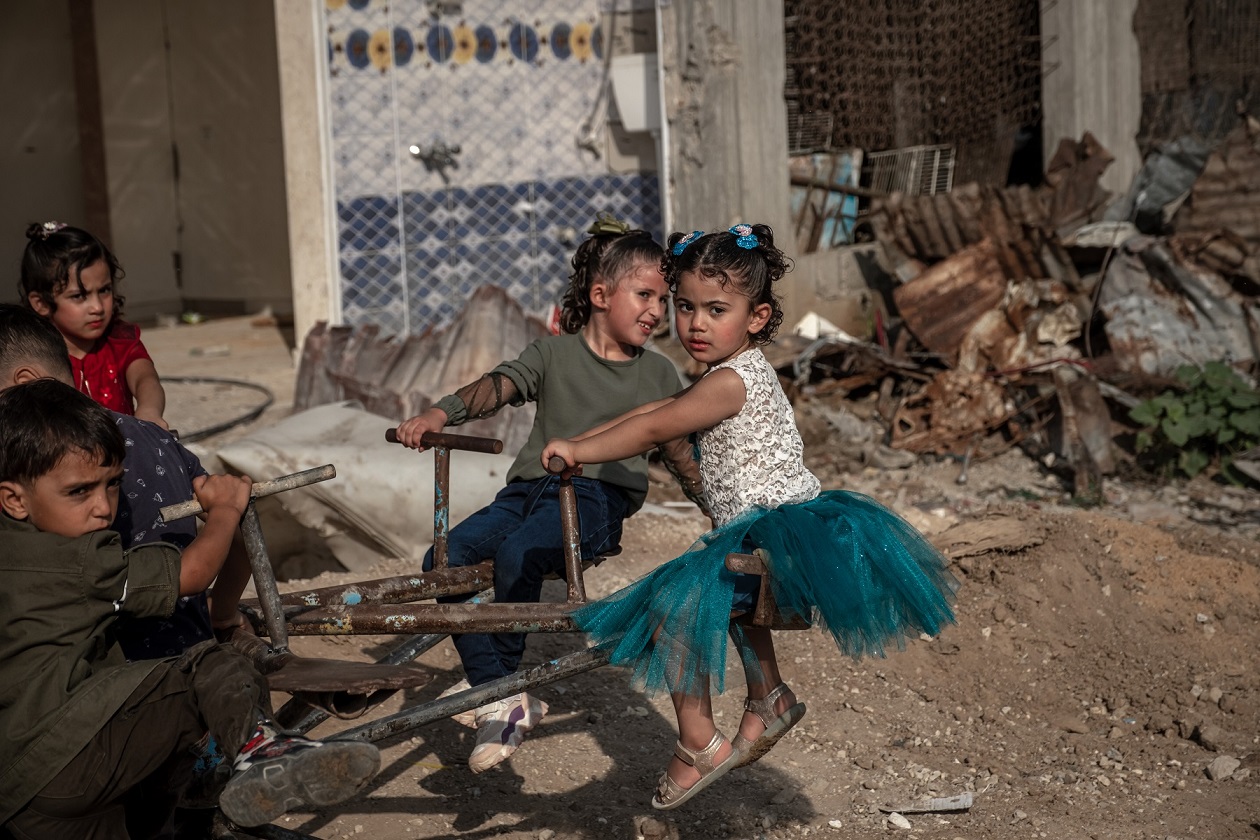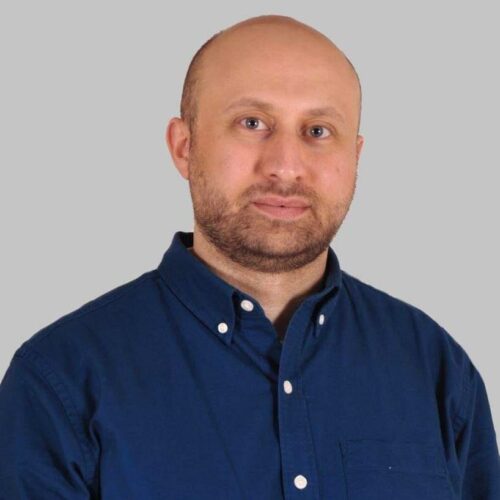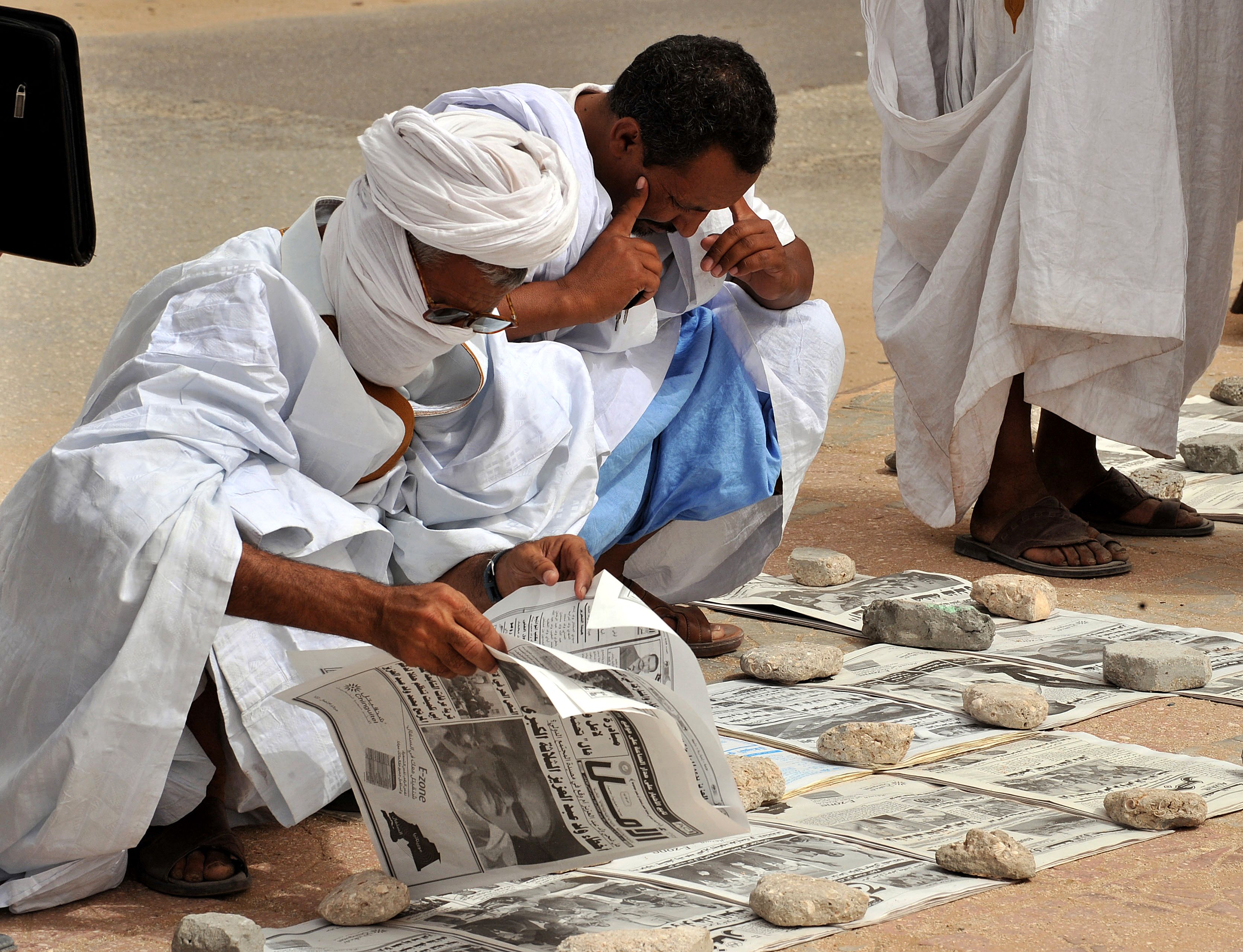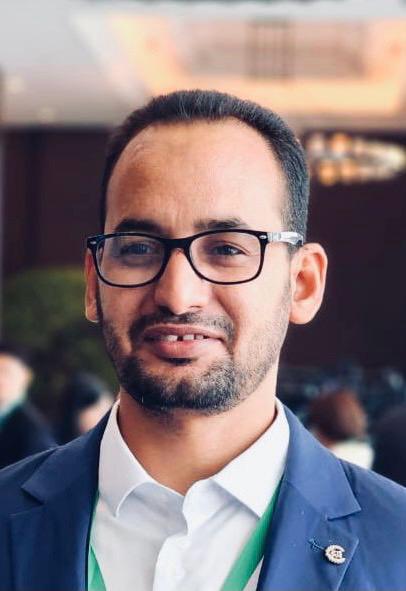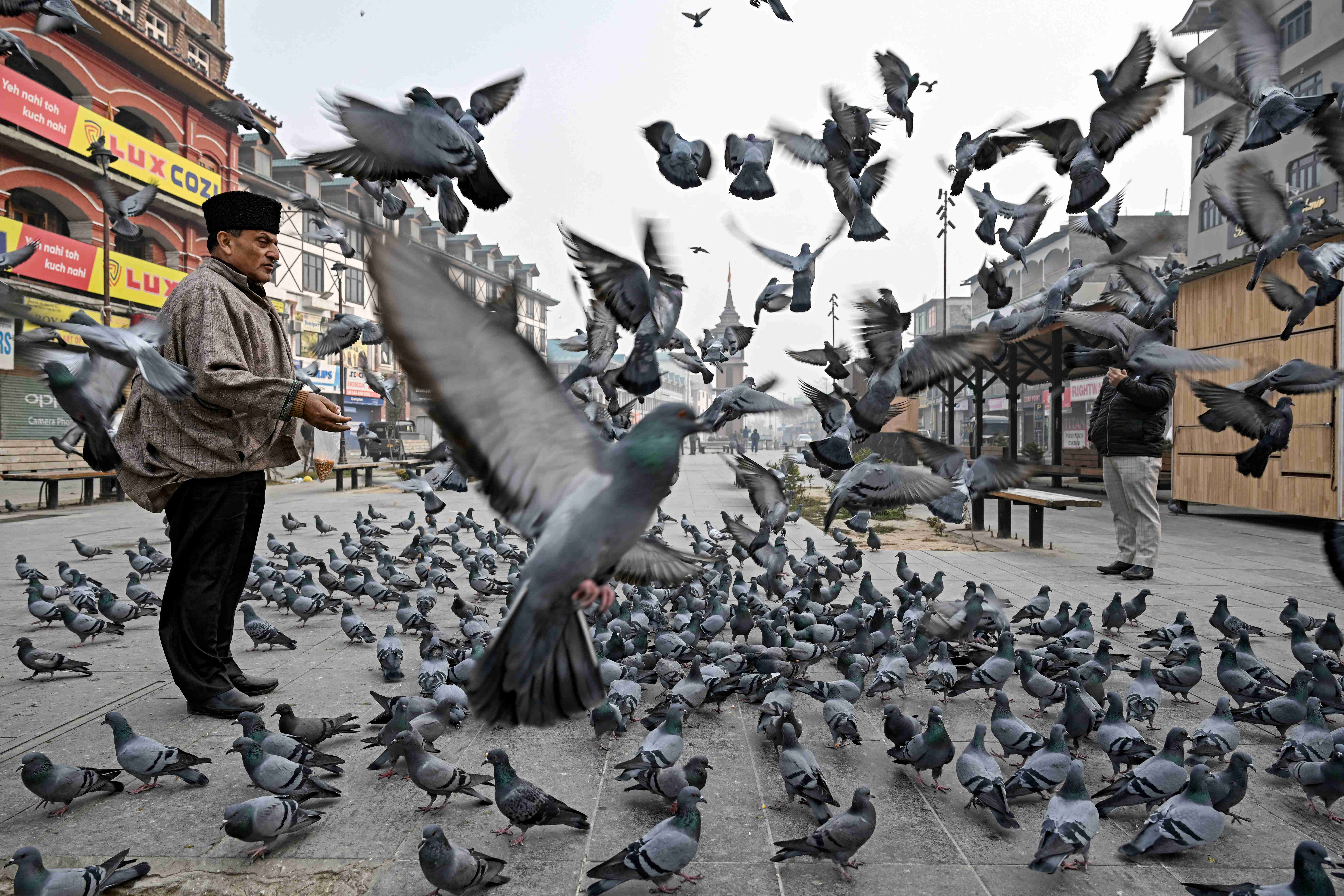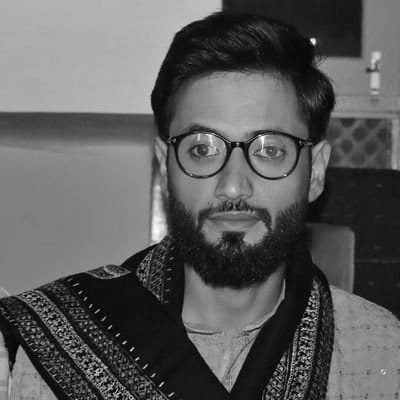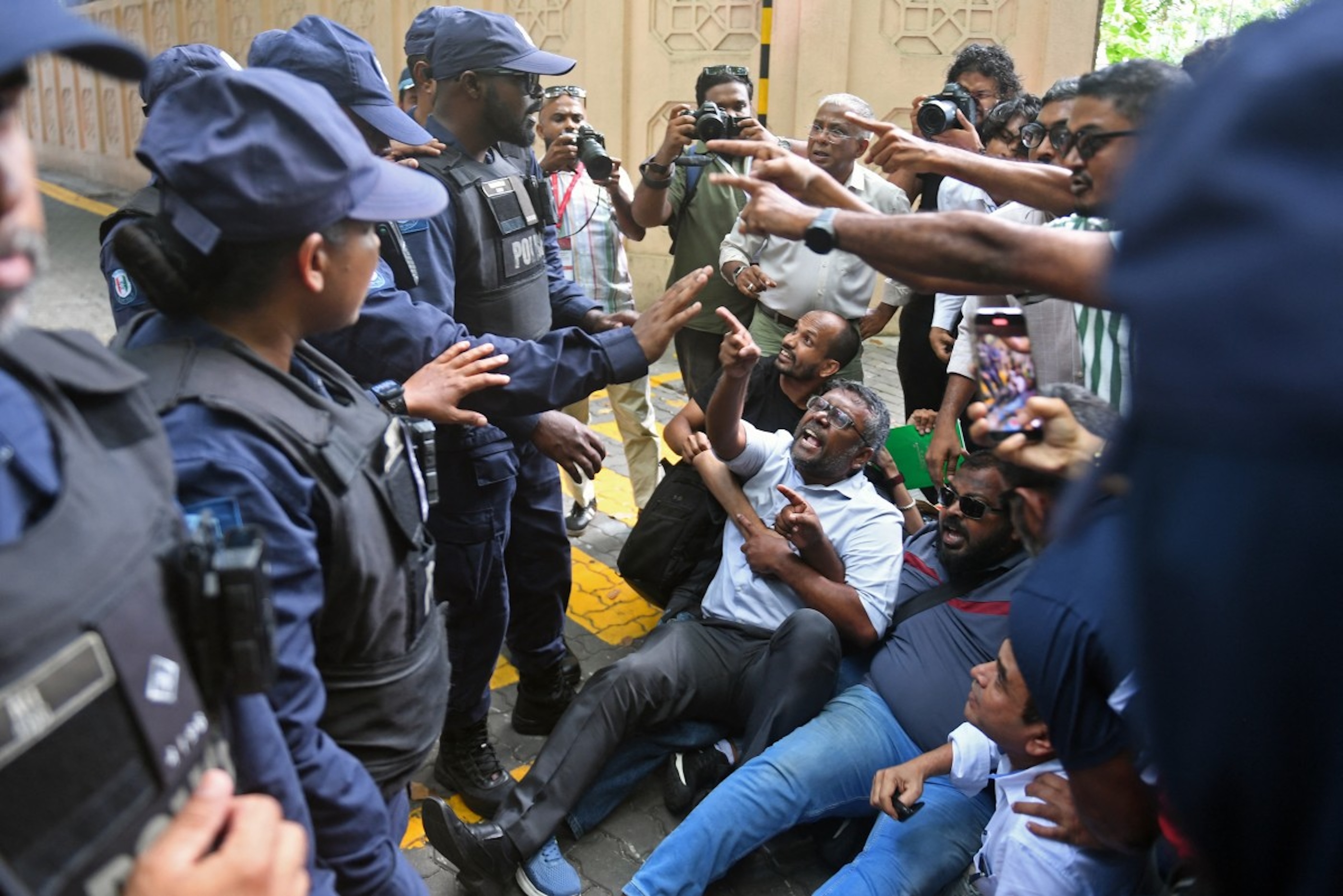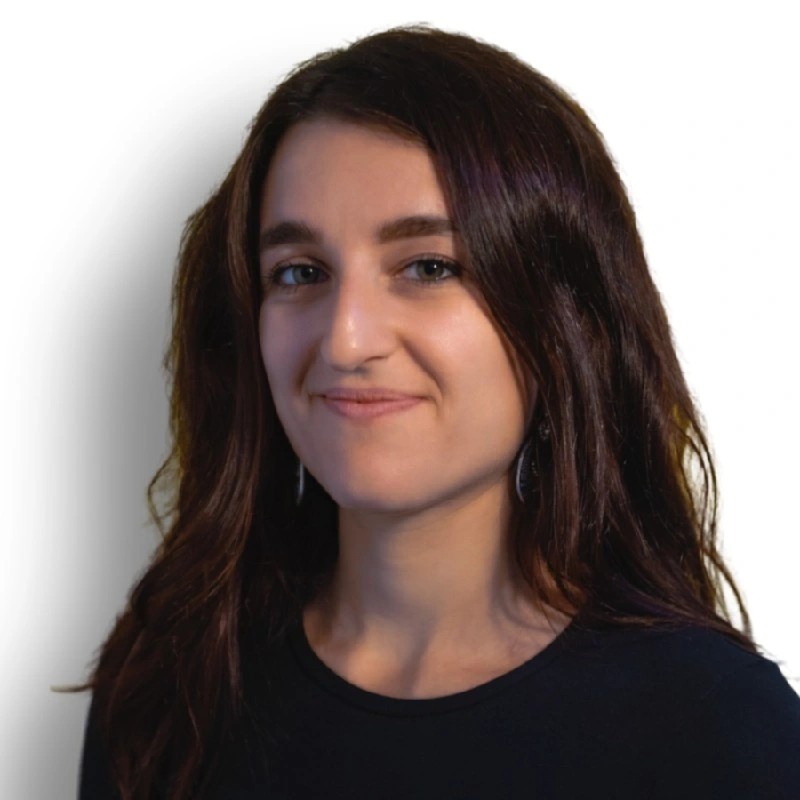من البوابة الأكاديمية، هذه المَرّة، جاءت التّجربة الفلسطينيّة الأولى في السّرد الصّحفيّ الرّقميّ التّفاعليّ. تلك البوّابة الّتي لطالما وُجِّه النّقدُ إليها بصفتها غارقة في الجانبِ النّظريّ ومشيحة عن الجانبِ العمليّ والنّزول للمَيْدان، جاءت اليوم بما هو اسْتثنائِيّ، فِلسطينيًّا على الأقلّ.
"إحنا القصص" (We Are Stories) (والتّرجمةُ الفصيحة: "نحن القصص") هي مَنصّة رقميّة أُطلِقت نهايةَ يوليوز/ تمّوز 2021، وعرضت 15 قصّة رقميّة ضمن مشروع يحمِل الاسمَ نفسَه، وهي ثمرة مُخرَجات مساق "صحافة البيانات وتحليل مواقع التّواصل" في برنامج ماجستير الإعلام الرّقميّ والاتّصال في جامعة القدس.
حاول القائمون على المشروع، وعلى رأسهم الدّكتور نادر صالحة، رئيس دائرة الإعلام، تقديمَ شكل جديد من صناعة المحتوى في البيئة الإعلاميّة الفِلسطينيّة؛ عبر توظيف جملةٍ من تِقْنِيات "الصّحافة الرّياديّة" والقصّة الرّقميّة.
"فُرجة أكثر ومحتوى أكثر"
مشروع "إحنا القصص" قائم بشكل رئيس على إنتاج القصص الرّقميّة القائمة على تحويل البيانات الضّخمة إلى قصص؛ من خلال "تجريف" بيانات مواقع التواصل ومن ثَمّ توظيفها في قالَب سرديّ يحوّل تلك البيانات الجامدة إلى حكايات، وعبر توظيف العديد من تِقْنِيات السّرد الرّقميّة، وبرمجيّات "بايثون"، وأدوات تحليل البيانات، في أسلوب سرد بصريّ جديد على البيئة الإعلاميّة الفِلسطينيّة.
ويؤكّد صالحة أنّ المشروع بصورتِه الحاليّة ما يزال نسخةً أوّليّة ستُطوّر لاحقًا؛ من خلال توظيفِ ما سيُنتجُه الطّلبة الّذين سيلتحقون بالبرنامَج خلال السّنوات القادمة، لكن "هذه البداية التي استغرق العمل عليها مدّة خمسة أشهر".
ويضيف: "كانت الفكرة أن نرويَ فلسطين رقميّاً بأسلوب جديد وقابل للتّعديل والتّطوير بشكل مستدام، في مجاراةٍ للقصص الرّقميّة في كُبريات الصّحفِ العالمية. "نؤمن أنّ القصّة الرّقميّة هي كائن حيّ"، يقول صالحة.
وفيما يتعلّق بأبرز التّحدّيات الّتي واجهت العمل، يرى صالحة أنّ أحدَ التّحدّيات الكبيرَة تمثّل في وجود جزء كبير من الطّلبة الّذين يعملون أصلًا في المؤسّسات الإعلاميّة الفِلِسطينيّة؛ ذلك لأنّهم اعتادوا على طريقة عمل تقليديّة، ولأنّ العمل بالمنصّة كان يجري بمنطق مختلف تمامًا عمّا اعتادوا عليه من قبل. "تعب الطّلبة كثيرا"، يُعلّق صالحة.
تَحَدٍّ آخر تمثّل في السّعي للخروج بالسّرد من الأسلوب الرّقميّ الشّائع، والّذي تواجهه تحديات كثيرة فيما يتّصل بصعوبة استيعابه للتّطوير والتّحديث والتحكّم بالتّدفّق، والأهمّ أنّه سريع الانطفاء. وحول هذا الموضوع يعتقد صالحة أنّ "الطّريقة التّقليديّة تنطلق من فكرة "فُرجة أكثر، ومحتوى أقل". في مشروعنا انطلقنا من شعار "فُرجة أكثر ومحتوى أكثر"، بهدف تطوير الصّحافة المحترفة عبر شقّ طريقتها الخاصّة في السّرد الطّويل القابل للتّعديل، من أجل الهروب من سطوة ثقافة مواقع التّواصل الاستهلاكيّة".
طغيان السّياسيّ
لوحِظ أنّ الجانب السّياسيّ طغى على القصصِ الرّقميّة الأولى الّتي نُشِرَت تباعًا على مدى يوم كامل بالمنصّة، في محاولة لمجاراة اللّحظة الزّمنيّة الرّاهنة؛ حيثُ يشغلُ الحدث الفِلسطينيّ السّاخن وارتباطاتُه السّياسيّة معظمَ المحتوى الرّقميّ الموجود على مواقع التّواصل.
القصّة الأولى حملت اسم "عائلاتٌ صَعدت إلى السماء" للصّحفيّة هبة البطّة، ووثّقت فيها -بنَفَس تحقيقيّ- أسماء العائلات الفِلِسطينيّة الـ 19 الّتي أُبيدَتْ في غزّة خلال العدوان الإسرائيليّ الأخير. أمّا القصّة الثّانية فحملت اسم "مقاطعة إسرائيل: كيف ولماذا؟"، وهي قصّة رقميّة لمحمد خبيصة وطارق الشريف، حاولت رواية حكاية المقاطعة منذ بدايتِها، مستخدمَةً تِقنيات تفاعليّة مميّزة، ومقدّمة أرقامًا صادمة.
أمّا قصّة "طرق الجُدران/ " Knocked The Wall!، فحاولت نداء يونس فيها تقديم معالجة تنظر للجدران بمقاربة مختلفة، من خلالِ رواية حكايةِ الجدران والجداريّات الفلسطينيّة والمخيّمات كما لم تُروَ من قبل. أما قصّة "النّاجون/ The Survivors" لدعاء شرباتي فتتحدّث عن النّاجين ومعنى النّجاة لضحايا العدوان الأخير على غزة، وتذهب الصحفيّة فيها إلى قصّة السّمكة، والابتسامات غير المُمكِنة، والشّهداء، وثنائيّة الألم والأمل، وأشياء أخرى.
وتذهب قصّة "لديهم مهمّة مقدّسة/ They have a holy mission" لديانا الخياط، وسمر ثوابتة وعبد الله الزماري، إلى وصايا القتل المُقدَّسة الّتي تستند على مباركة تِلموديّة دمويّة: "اقتلوهم جميعاً"، "كلّ الأمّهات يجب أن يُقتلن". إنّها قصّة "إسرائيل" الدّينيّة والسّياسيّة والحربيّة الّتي تُمارس قتل الأطفال الفلسطينيّين في كلّ عدوان.
وتوثّق قصّة "غزة ٢٠٢١: الثنائية الوبائية، نزوح داخلي جديد/ Gaza 2021: A Dual Pandemic. A new era of displacement" لكلّ من ظافر صباح، وهديل موسى، وسميّة أبو رموز- سرديّةً رقميّةً بعرض بصريّ لحركة النّزوح الفِلسطينيّ داخل قطاع غزّة خلال العدوان الأخير في أيّار ٢٠٢١.
أمّا قصّة "مشاهير لأجل فلسطين/ Celebrities for Palestine" فهي قصّة رقميّة فنيّة لوسام شتيوي، ومحمود حريبات، ومريم شومان، تتوقّف عند ظاهرة دعم المشاهير ومواقف الشّخصيات الفنيّة تجاه القضيّة الفلسطينيّة ومعركة الشّيخ جرّاح خلال معركة أيّار الأخيرة.
فيما تسرُدُ قصّة "التجوّل في الأفق" لـأمل عودة، بأسلوب مُصوَّر شيّق، عمليّةَ توظيف "إسرائيل" قوانين المحميّات الطّبيعيّة لمصادرة المزيد من الأراضي الفِلسطينيّة، سعيًا للتوسُّعِ الاستيطانيّ في مجموعة من أجمل أراضي فلسطين.
فيما تأتي قصّة "من النهر إلى البحر/From The River To The Sea" لكلّ من آية النّاشف وأبرار الشاعر، لترصد أثر معركة أيّار والشيخ جرّاح في إعادةِ الاعتبار لمقولة "من البحر إلى النهر".
حضور قويّ للشّبكات
تحكي قصّة "فلسطين يجب أن تُسمَع/ Palestine must be listened" لإياد الرفاعي بصرياً سياسات منصّات التّواصل الاجتماعيّ في التّضييق على المحتوى الفِلسطينيّ في البيئة الرّقميّة، وهي قصّة تتمّمها قصّة "رقابة فيسبوك على المحتوى الفِلسطينيّ/ FB Censorship of Palestinian Content" لمجدي نصاصرة ودانا أبو شمسية الّتي تتحدّث عن سياسات فيسبوك المنحازة، والّتي تُطبَّق على المحتوى الفِلسطينيّ.
وتقوم قصّة "هاشتاك A Story of a Hashtag" لـثائر نصار ووسام عطوان على تحليل بيانات نشاط وسم "أنقذوا الشيخ جراح/ SaveShaikhJarrah" منذ انطلاقِه حتى ذِروة صعوده؛ من خلال مراقبة الأرض أثناء متابعة الوسم. أمّا قصّة "الأبارتهايد الرقميّ Digital Apartheid" لرمز عطّاري، فتنطلق من فلسفة إدوارد سعيد وأفكاره حول نظام الأبارتهايد ولجم الرّواية الفلسطينيّة، لتستنتج مقاربة جديدة للفصل العُنصريّ، لكن هذه المرّة حول الّذي يُمارس في الفضاء الرّقميّ بهدف تهديد المساحات الرّقميّة الفِلسطينيّة.
نظام الورش لا المحاضرة
يؤكّد صالحة في حديثه أنّ الوقت قد حان -فِلسطينيًّا على الأقلّ- لدمج التّكنولوجيا بالإنسانيّات، والقطع معَ ثقافة التخصّصات العلميّة والأدبيّة في تدريس الإعلام؛ فالطّلبة يدفعون ثمن طريقة التّدريس التّقليديّة في دراسة الإعلام في المرحلة الأولى (البكالوريوس).
ثمّة صعوبات كبيرة تواجه المشروع حسب صالحة، خاصّة فيما يرتبط بالخوف الّذي يساور الصحفيّين الجدد من سطوة شبكات التّواصل الاجتماعيّ والتّقاليد الّتي كرّستها خلال السّنوات العشر الماضية، كما أنّه اعتمد نظام التّدريس القائم على الورش المفتوحة الّتي قد تستمرّ يومًا كاملًا. إنَّ "منطق المحاضرة بمفهومها التّقليديّ لم يعُد صالحًا للعمل الصّحفيّ، ومن قبله للتّدريس الصّحفيّ أيضًا"، وفق صالحة الّذي يرى أنّ "نظام الورش يُعَدّ طريقة تدريس مثاليّة؛ لكونها تعمل على تبادل الخبرات وتحقيقها بين الدّارسين القادمين من خلفيّات مختلفة وأعضاء الفريق الرّقميّ المساعد، ولأنّ قاعدة العمل/التدريس كانت تقوم على جملة "فرجيني ولا تحكي لي (أرني ولا تقل لي)"، "نحن معتادون على الحكي، أمّا سرد القصّة بصريًّا فلهُ متطلّبات مختلفة".
يمكن لأنموذج العمل المسيطر الّذي تكرّسه شبكات التّواصل الاجتماعيّ أن يكون ناجحًا للشّركات التّجاريّة والعلاقات العامّة، لكنّه أنموذج مُضِرّ بالصّحافة ووظائفها الجوهريّة دائمًا وفق صالحة، كما أنّ "منطق الصّحافة لا يعمل وفق السّائد في الإعلام وشبكات التّواصل الاجتماعيّ، أمّا مشروعُنا فهو يعيد مكانة الصّحافة في لحظة تبدو لنا فيها أنّها فقدت زمام المبادرة، لكنّها ترفع صوتها وتقول "لا"، وها هي تقوم بالاستعانة بكلّ الأدوات الحديثة ومن صلب وسائل التّواصل الاجتماعيّ، وتضيف للتَّجرِبة دون أن تفقد الصّحافة خصائصها".
وسيبدو للمتابع ومتصفّح موقع المشروع أنّ معظم القصص في هذه التّجربة باللّغة الإنجليزيّة، والسّبب وراء ذلك هو تصدير الرّواية الفِلسطينيّة على أوسع نطاق. "صوت الفلسطينيّ فيه مشكلة، خطابنا معاق، إعلامنا يحكي لنا، منّا وإلينا، وقليلة هي المبادرات الحيويّة الّتي تستهدف المجتمعات الأخرى، والغربيّة تحديدًا"، حسب القائمين على المشروع.
ويرى صالحة أنّ أهمّ ما يميّز هذه القصص أنّها ليست منتجة من مؤسّسة إعلاميّة ذات توجّهات سياسيّة معيّنة، بل هي "قصص صنعها صحفيّون متحرّرون من أيّ معيقات مهنية، صنعوا المحتوى الصّحفيّ بمهنيّة وإخلاص. وتُعَدّ هذه النّسخة هي الأولى للمنصّة، وستُحَدّث باستمرار من قبل طلّاب البرنامج في المواسم القادمة".
التّجرِبة الجديدة لا تعني إطلاقًا أنّه يجب توجيه السّرد للغرب فقط، بل يجب الاهتمام بأساليب سرديّة جديدة موجّهة للفلسطينيّين تتبنّى السّرد التفاعليّ؛ "فالجمهور يعيش في بيئة صحفيّة فقيرة وغير مبادرة، وتركن للاستسهال، فيما مشروع "إحنا القصص" حالة غنى وثراء واختلاف يحتاجها الحقل الأكاديميّ ومجتمع الصّحافة والأخبار".
